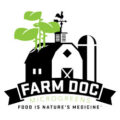Microgreens are a great treat that nature has given us. We eat them because they are great as a snack, on a salad, as a salad or blended in a smoothie. However, do we all know the nutrient benefits these little greens pack? Researchers at the University of Maryland, College Park were surprised by the results of their study. “The microgreens were four- to 40- fold more concentrated with nutrients than their mature counterparts,” says researcher Qin Wang, PhD, assistant professor at the University of Maryland in College Park. “When we first got the results we had to rush to double and triple check them.” Researchers evaluated levels of four groups of vital nutrients, including vitamin K, vitamin C, vitamin E, lutein, and beta-carotene, in 25 different commercially grown microgreens. The results are published in the Journal of Agricultural and Food Chemistry. Vitamin C, vitamin K, and vitamin E levels were highest among red cabbage, garnet amaranth, and green daikon radish microgreens. Cilantro microgreens were richest in terms of lutein and beta-carotene. “All of these nutrients are extremely important for skin, eyes, and fighting cancer and have all sorts of benefits associated with them,” says researcher Gene Lester, PhD, of the USDA.
Lester said he was surprised to find microgreens were superior in nutritional value than the mature plants. “To find that the levels were not only detectible but in some cases 4-6 times more concentrated than in the leaves of a mature plant, I find that quite astonishing.” Although more research is needed, Wang says there may be a good explanation for microgreens’ high nutrient content. “Because microgreens are harvested right after germination, all the nutrients they need to grow are there,” says Wang. “If they are harvested at the right time they are very concentrated with nutrients, and the flavor and texture is also good.” (WebMD)
